The copycat season has not come yet, so why is this cycle so difficult?

Reprinted from panewslab
02/18/2025·2MAuthor: Wengou Diary
First of all, this cycle is very difficult. But the truth is that each cycle is harder than the previous one. You are competing with a larger population, and the number of experienced participants is increasing. If you don't hold most of BTC or SOL during a bear market, you may not make any money and are in a hurry.
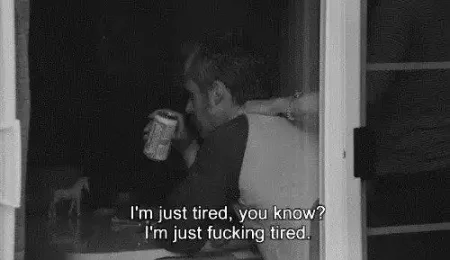
So, why is this cycle so difficult?
1. Post-traumatic stress disorder
We have two examples of large altcoin cycles, most of which fell 90-95%, and the industry was infected due to the closing of Luna and FTX, and the price could even fall lower than it should. This PTSD deeply affects the indigenous people of cryptocurrencies.
No one wants to hold anything for a long time because they never want to lose a lot of money in their portfolio again. The participants’ mood swings were even stronger, and everyone was constantly looking for the top of the cycle.
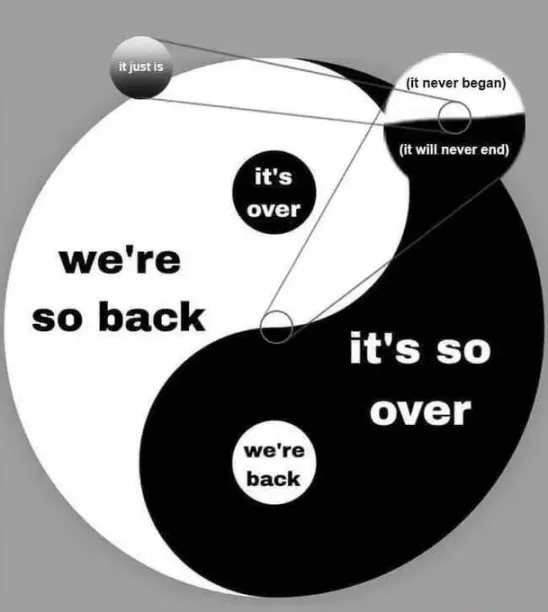
Psychological impact is not limited to trading behavior, but also affects the construction and investment methods of the entire ecosystem. Projects are now facing stricter scrutiny and the threshold for trust has increased exponentially. This has both positive and negative effects: While it helps filter out obvious scams, it also makes it harder for legitimate projects to gain attention.
2. Innovation
There are more iterative innovations and infrastructure is constantly improving, but there is no 0->1 and jaw-dropping breakthrough like DeFi. This makes it easier for people to argue that cryptocurrencies have not made progress, etc., and has also led to more statements like "cryptocurrencies have achieved nothing".
The innovation pattern has shifted from revolutionary breakthroughs to gradual improvements. While this is a natural evolution of any technology, it presents challenges to the narrative-driven market.
We still lack groundbreaking applications that are necessary to bring cryptocurrency to hundreds of millions of on-chain users.
3. Supervision
Corrupt SEC has wreaked havoc. They hinder the industry and prevent further development of certain industries (such as DeFi) that could have had more PMF and a wider audience. They also prevent all governance tokens from passing any value to holders, thus creating the claim that “all of these tokens are useless” is true in some way.
The SEC drove away the builder (see Andre Cronye’s description of how the SEC forced him to resign), blocked TradFi from interacting with the industry and ultimately forced the industry to raise funds from venture capital firms and created bad supply and price discovery dynamics, All the value was obtained by a few people.
4. Financial nihilism
All of the above factors have led to financial nihilism becoming an important factor in this cycle. "Useless Governance Tokens" and the high FDV, low floating dynamics caused by the Securities and Exchange Commission (SEC) have prompted many cryptocurrency natives to turn to memecoin in search of "fairer" opportunities.
In today's society, asset prices soar, legal tender continues to depreciate, wages cannot keep up, and young people have to get rich through gambling. This is also a fact, so memecoin lottery is very attractive. Lottery is always attractive because it gives people hope.
Because gambling has PMF in cryptocurrencies, and we have better technology in gambling (Solana and Pump.fun, etc.), the number of tokens issued soared. This is because many people want to do super gambling. There is such a need.
"Trenches" have always been a word in cryptocurrencies, but it has become a widely understood term in this cycle.
This nihilistic attitude is reflected in the following aspects:
- "Degenerate" culture has risen and become mainstream
- Shorten investment period
- Focus more on short-term trading rather than long-term investment
- The normalization of extreme leverage and risk-taking behavior
- Take a "nothing" attitude towards fundamental analysis
5. The experience of the previous cycle is a hindrance
The past few cycles have told you that you can buy some altcoins in a bear market and eventually get a reward by surpassing BTC.
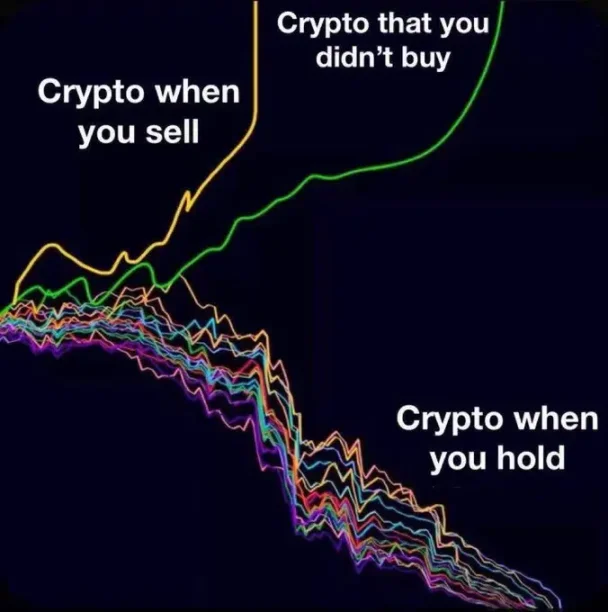
Almost no one is a good trader, so this is the best choice for most people in the past. Overall, there is a chance even the worst alternative.
This cycle is a market for traders, and sellers are more suitable than holders. Traders even earned the biggest gains in this cycle through HYPE airdrops.
The first hype cycle of AI Agent is an example. This may be the first time people feel that "this is something new we're always looking for." This is still an early stage, and long-term winners may not have appeared yet.
6. There are new buyers for BTC, while most altcoins do not
The disagreement between Bitcoin and everything else has never been more obvious.
BTC unlocks the bid for TradFi. It has an incredible new source of passive demand for the first time, and central banks are now discussing adding it to their balance sheets.
It makes sense that altcoins are harder than ever in their competition with BTC, as BTC has a clear goal of comparable market capitalization to gold.
There are really no new buyers for altcoins. Some retail investors returned at a new BTC high (but they bought XRP), but overall, new retail investors lacked traffic and cryptocurrencies still had reputation problems.
7. Transformation of ETH roles
The decline in BTC's dominance is largely affected by the growth of ETH's market capitalization. Many people think the trigger for "altcoins" is ETH rise, but this heuristic has not worked so far in the cycle because ETH has performed very poorly due to fundamental reasons.
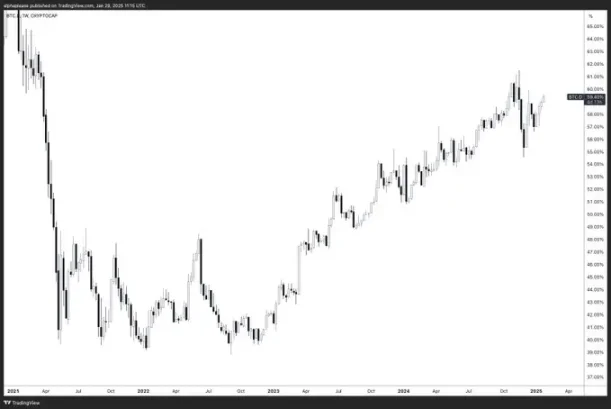
I still believe that fundamentals will always work in the long run, but you have to really understand the projects you support and how they will truly go beyond BTC. There are candidates, but there are only a few at present.
Look for items with the following characteristics:
- A clear income model
- The fit between actual products and market
- Sustainable token economy
- Strong narratives to complement fundamentals (to me, AI and RWA are suitable)
I think that due to the relaxation of US regulation, those with stronger fundamentals and PMF can ultimately add value to their tokens, which are less risky investments. The income printing agreement has now been established and has a very good effect. This is very different from the "bashing fool" theory that dominated many token models before.
You can choose to be a better trader, try to develop your strengths and focus on doing more short-term trading, as this market does offer many consistent short-term settings. Onchain will provide a larger multiple, but will also have a lower tolerance for downside risks.
For most people who don’t have a clear advantage, a barbell portfolio is still a viable approach. BTC and SOL (70-80%) and allocate less money to yourself for more speculative investments. Rebalance regularly to maintain these ratios.
You need to understand how much time you have to spend on cryptocurrencies and adjust your strategy accordingly. If you are a normal person with a job, competing in the trenches with Zoomer who sits there for 16 hours a day will not work. This time, it won't work to passively hold a sub-performing alternative and wait for your turn.
Another strategy is to try to combine different areas. Have a basic portfolio of solid assets and then consider taking airdrops (it's harder now, but the chance of lower risk still exists), or identify emerging ecosystems and prepare early (HyperLiquid, Movement, Berachain, etc.), or focus on in the selected category.
I still believe that the altcoin market will grow this year. The situation has been determined and we are still related to global liquidity, but what really goes beyond BTC and SOL will be limited to a few industries and a smaller number of altcoins. The rotation speed of altcoins will continue to accelerate.
If we print money crazy, then we may see a closer look to the previous traditional altcoin season, but I don't think it's likely that most altcoins will only provide market average returns even in this case. This year we will still launch some large altcoins, and liquidity will continue to be diversified.


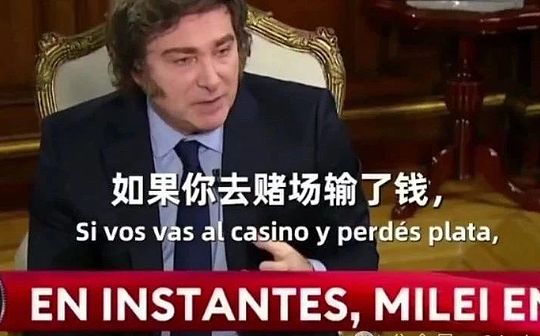
 jinse
jinse